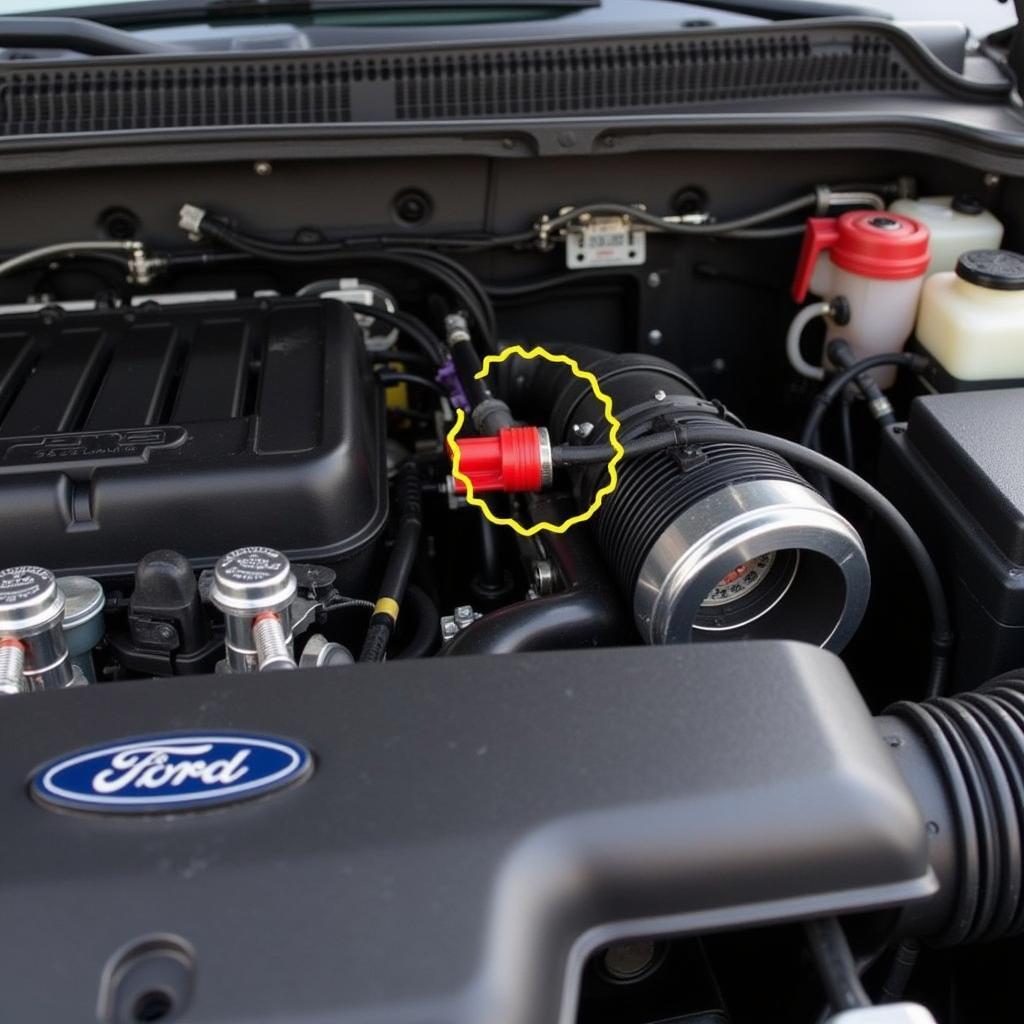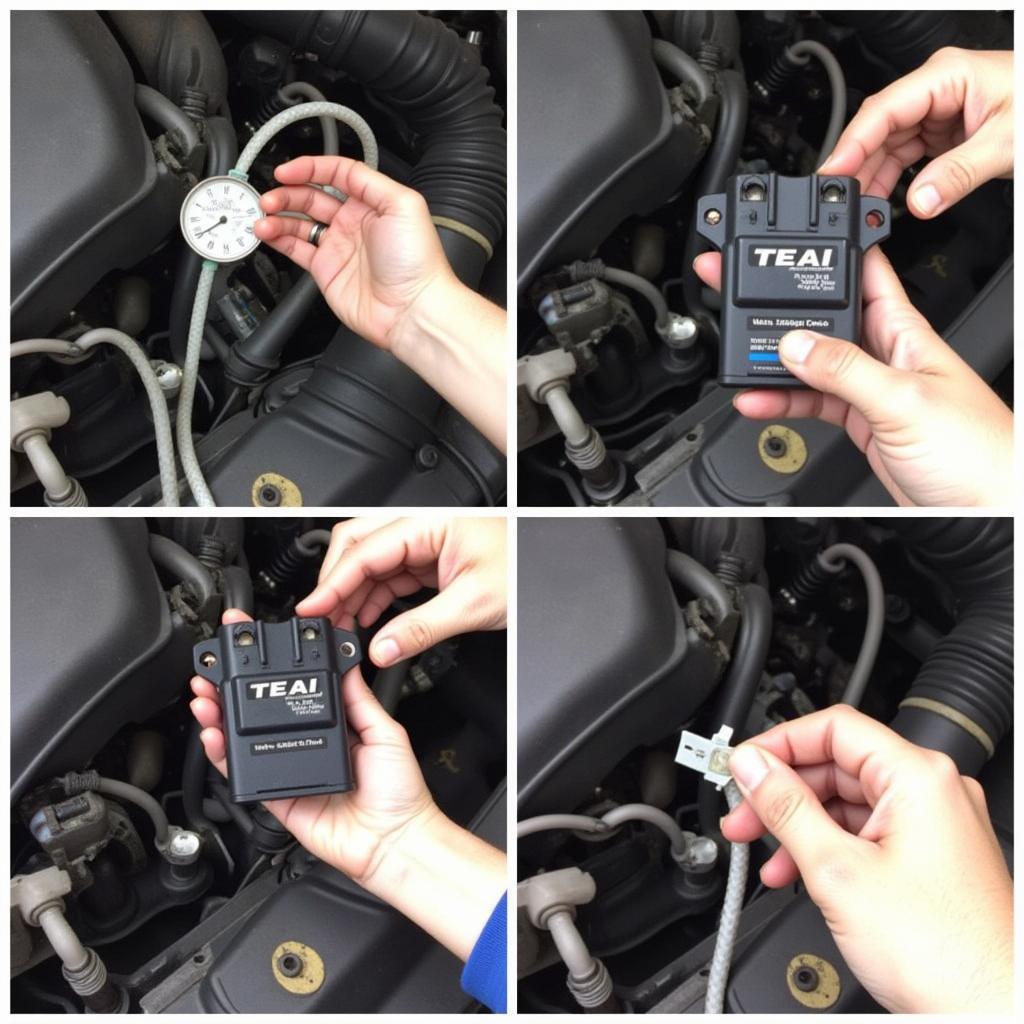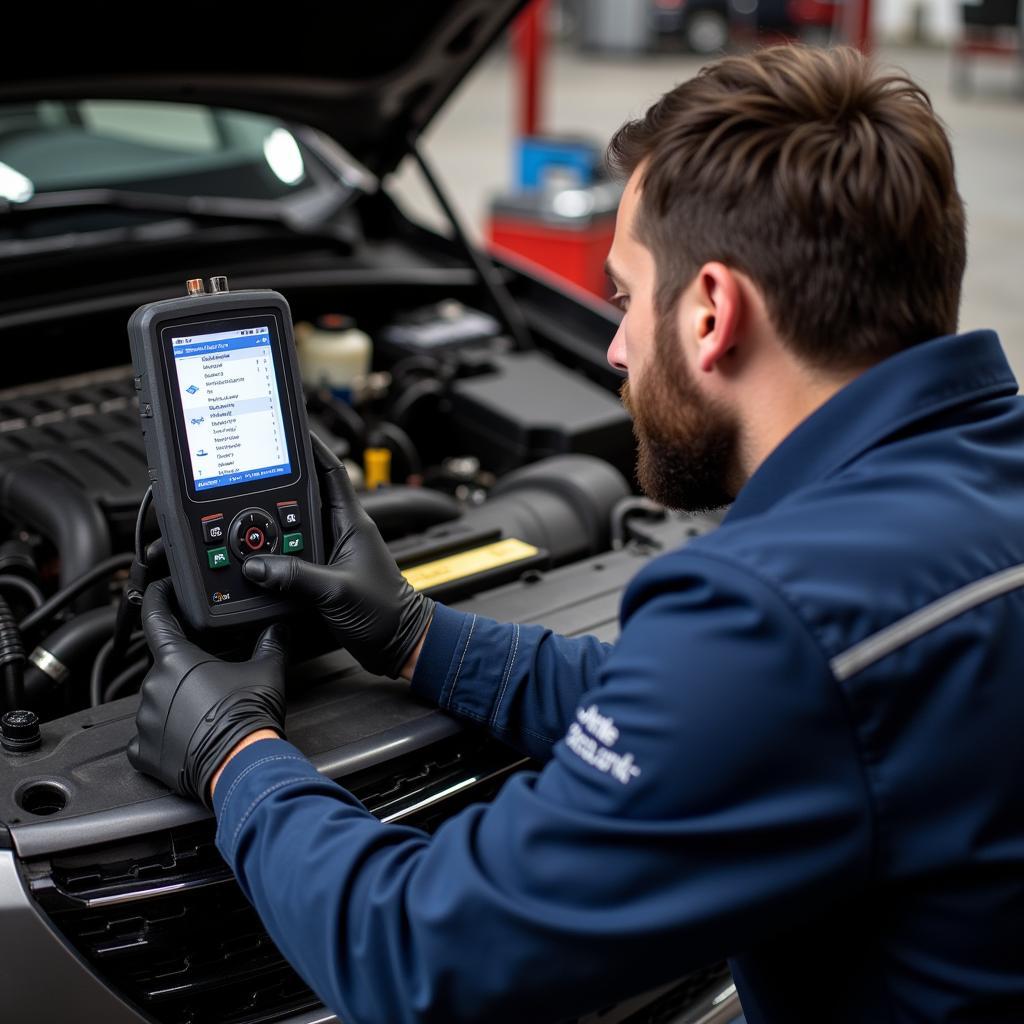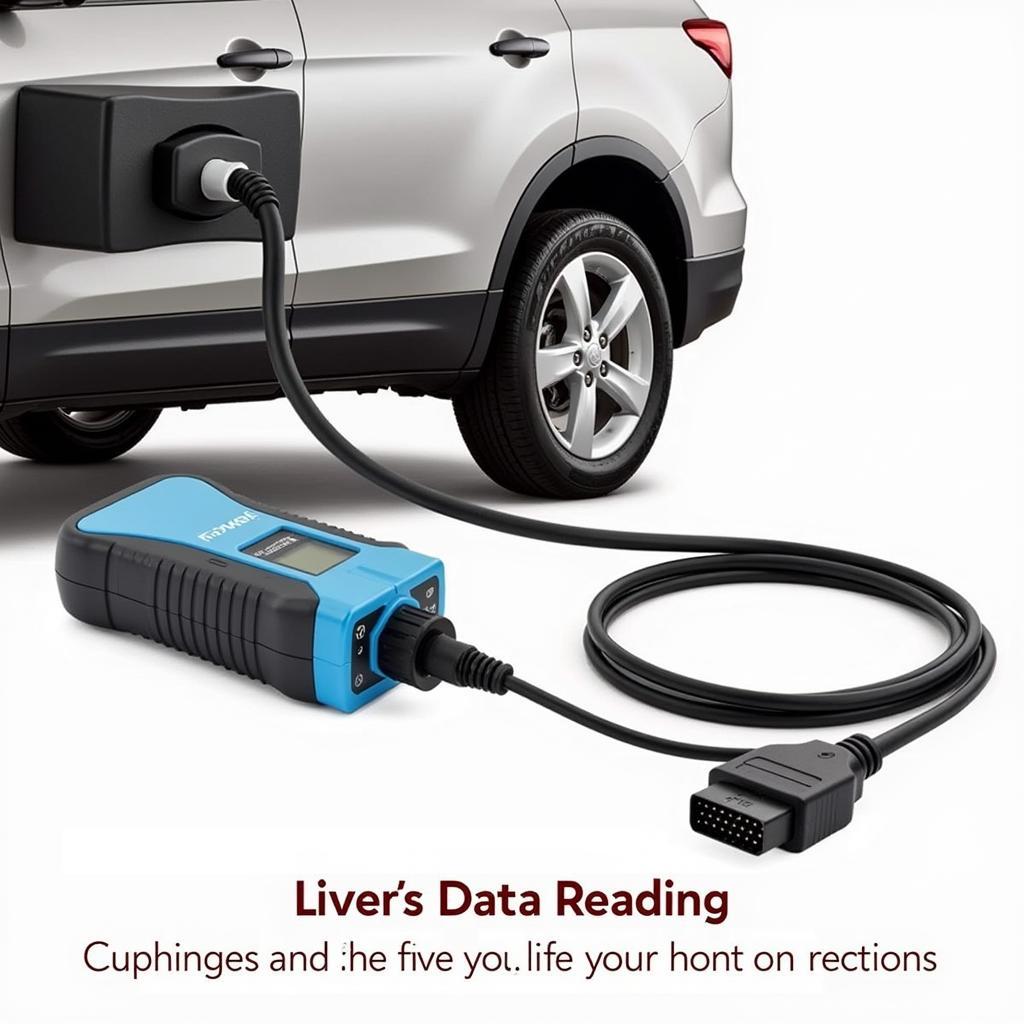Experiencing engine misfires, rough idling, or decreased fuel efficiency in your Ford F-150? A faulty coil pack could be the culprit. The Foxwell NT301 scan tool can be your best friend when it comes to diagnosing and resolving this common issue. This comprehensive guide will walk you through how to use the Foxwell NT301 to pinpoint and fix F-150 coil pack problems, getting you back on the road in no time.
Understanding Coil Packs and Their Importance
Before diving into the diagnostics, let’s understand the vital role coil packs play in your F-150’s engine performance.
In a nutshell, coil packs are responsible for generating the high voltage necessary to create a spark in your engine’s spark plugs. This spark ignites the air-fuel mixture, powering your vehicle. Each cylinder in your F-150’s engine has its own coil, or in the case of coil-on-plug systems, a coil directly mounted on top of the spark plug.
 Ford F-150 Coil Pack Location
Ford F-150 Coil Pack Location
Common Symptoms of a Failing Coil Pack
A failing coil pack can manifest itself in several ways, often mimicking other engine issues. Here are some telltale signs that you might have a problematic coil pack:
- Engine Misfires: One of the most common symptoms is engine misfires, which can feel like a stuttering or hesitation during acceleration.
- Rough Idling: If your F-150’s engine vibrates excessively while idling, it could be a sign that a coil pack is failing to provide sufficient spark.
- Check Engine Light: The dreaded “Check Engine” light can illuminate for various reasons, but a flashing light, particularly when accompanied by misfires, often points to a coil pack issue.
- Reduced Fuel Economy: A failing coil pack can disrupt the combustion process, leading to inefficient fuel consumption.
- Difficulty Starting: While not as common as other symptoms, a severely damaged coil pack can make starting your F-150 difficult.
How the Foxwell NT301 Helps Diagnose Coil Pack Issues
The Foxwell NT301 is an affordable yet powerful OBD2 scanner that provides the capability to diagnose and pinpoint issues with your F-150’s coil packs. Here’s how it helps:
- Reading Diagnostic Trouble Codes (DTCs): The NT301 can retrieve engine trouble codes stored in your F-150’s computer, such as the P0300 series codes, which are specifically related to cylinder misfires.
- Live Data Streaming: This feature enables you to view real-time data from your engine sensors, including misfire counts per cylinder, which is crucial for identifying a problematic coil pack.
Step-by-Step Guide to Diagnosing Coil Pack Issues with the Foxwell NT301
- Connect the Foxwell NT301: Locate your F-150’s OBD2 port (usually found under the dashboard on the driver’s side) and connect the NT301.
- Turn on the Ignition: Turn the ignition to the “on” position but don’t start the engine.
- Access Engine Diagnostics: Navigate through the NT301’s menu to access the “Engine” or “Powertrain” diagnostics section.
- Read DTCs: Select the option to read Diagnostic Trouble Codes. The NT301 will display any stored codes. Note down any codes related to misfires (e.g., P0301, which indicates a misfire in cylinder 1).
- Clear Codes (Optional): You can choose to clear the codes at this point. This helps confirm if the codes return after a short drive, indicating an active problem.
- Live Data Stream: Go back to the diagnostics menu and select “Live Data.” Look for parameters like “Misfire Count” or “Misfire Cylinder” to observe which cylinder(s) are experiencing misfires.
Expert Insight: “Always refer to a reliable source for interpreting specific DTCs for your F-150’s year and engine type,” advises John Miller, a veteran automotive electrician. “Online forums and repair manuals can be valuable resources.”
Replacing a Faulty Coil Pack
Once you’ve identified the faulty coil pack using the Foxwell NT301, replacing it is a relatively straightforward process:
- Gather Tools and Parts: You’ll need a socket wrench set, a ratchet, and the replacement coil pack(s).
- Locate the Faulty Coil Pack: Refer to your F-150’s service manual or a reputable online resource to pinpoint the exact location of the problematic coil pack.
- Disconnect the Electrical Connector: Carefully detach the electrical connector from the coil pack.
- Remove the Coil Pack: Use the appropriate socket and ratchet to loosen and remove the coil pack from the engine.
- Install the New Coil Pack: Align the new coil pack and carefully thread it into place. Tighten it securely, but avoid overtightening.
- Reconnect the Electrical Connector: Reattach the electrical connector to the new coil pack.
- Clear Codes and Test: Use the Foxwell NT301 to clear any stored codes and then start your F-150 to ensure the new coil pack has resolved the issue.
 Replacing a Ford F-150 Coil Pack
Replacing a Ford F-150 Coil Pack
Conclusion
Troubleshooting and resolving coil pack problems on your Ford F-150 can be done effectively and affordably with the help of the Foxwell NT301 scan tool. By understanding the symptoms of faulty coil packs and utilizing the diagnostic capabilities of the NT301, you can save time and money on unnecessary repairs. Remember to consult your F-150’s service manual or a trusted mechanic if you encounter difficulties during the process.
Need further assistance with diagnosing your F-150’s coil pack issues? Contact our team of automotive experts at ScanToolUS at +1 (641) 206-8880 or visit our office at 1615 S Laramie Ave, Cicero, IL 60804, USA. We’re here to help get you back on the road!
FAQs
1. Can I drive my F-150 with a bad coil pack?
It’s not recommended to drive with a faulty coil pack as it can lead to further engine damage.
2. How long do coil packs typically last?
Coil packs have a lifespan of around 50,000 to 100,000 miles, but factors like extreme temperatures and driving conditions can affect their longevity.
3. Are there any preventative measures for coil pack issues?
Regular engine tune-ups, including spark plug replacements, can help prevent premature coil pack failure.
4. Can I replace a single coil pack or should I replace them all?
While replacing all coil packs at once can ensure consistent performance, if you’ve accurately identified a single faulty coil pack, replacing only that one is sufficient.
5. What are some other potential causes of engine misfires?
Besides coil packs, engine misfires can be caused by faulty spark plugs, worn ignition wires, vacuum leaks, or fuel system issues.


